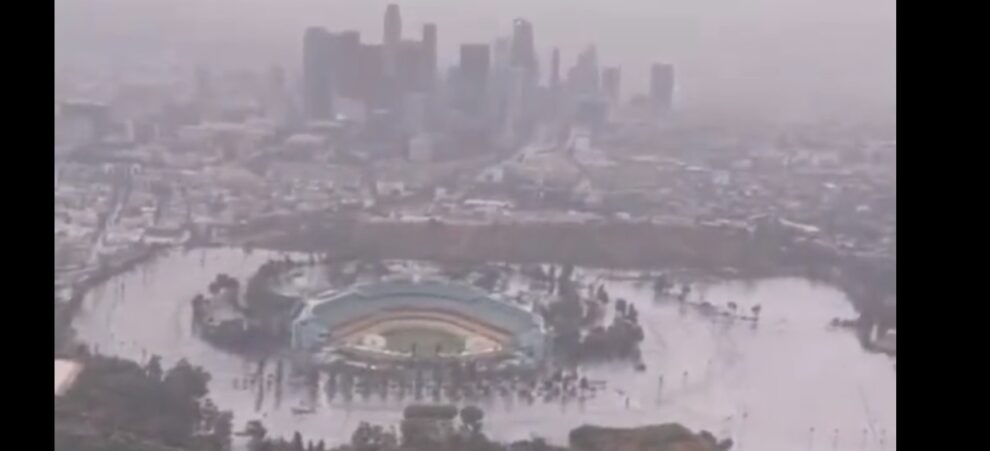Tropical Storm Hilary drenched Southern California with record rainfall, shutting down schools, roads and businesses before edging in on Nevada on Monday.
California Governor Gavin Newsom had declared a state of emergency over much of the typically dry area, where flash flood warnings remained in effect until Monday morning.
The Los Angeles branch of the National Weather Service said overnight that multiple daily rainfall records in the region had been broken.
With people already on edge ahead of the storm’s arrival, a 5.1-magnitude earthquake jolted the southern California town of Ojai, but there were no immediate reports of damage or casualties.
The deluge from Hilary swamped roads, transforming highways into rivers and stranding some motorists.
The start of the public school year was widely delayed for a day, with class postponed in several school districts, including San Diego, Los Angeles, Pasadena and Palmdale.
At its peak a Category 4 hurricane — the second-most powerful on the five-step Saffir-Simpson scale — Hilary was downgraded to a tropical storm as crossed into the United States from Mexico and later to a post-tropical cyclone.
As of Monday morning, Hilary’s core was located in Nevada, which it was expected to quickly move across, while also glancing the states of Oregon and Idaho with rain, according to the latest advisory from the US National Hurricane Center (NHC).
“Life-threatening and locally catastrophic flooding” continued to be expected over portions of the southwestern United States, it added.
The storm was moving at the brisk pace of 35 miles (55 kilometers) per hour, with stronger gusts.
– ‘Unprecedented weather event’ –
A local ABC affiliate broadcast video of intense flooding in parts of Palm Springs, where the police department announced an outage of the emergency 911 call line on Sunday night, advising people to head to the nearest fire or police station in person.
Beaches were ordered closed and people rushed to stores to stock up on water and other essentials. Flash flood and even tornado warnings were issued for some areas.
“This is an unprecedented weather event,” Los Angeles Mayor Karen Bass warned.
Despite the storm’s weakening as it tracked inland, US Federal Emergency Management Agency (FEMA) administrator Deanne Criswell urged people to take the dangers seriously, warning it posed a “serious impact and threat to southern California.”
Authorities opened five storm shelters and deployed more than 7,500 personnel, including several hundred National Guard soldiers as well as swiftwater rescue teams, the California governor’s office said.
In San Diego, people filled sandbags to prepare for possible flooding, while lifeguards warned people to stay out of the sea.
– ‘Very, very dangerous’ –
One person died in Mexico after a vehicle was swept away by a swollen river, Mexico’s Civil Protection agency said, while warning of landslides and road closures in Baja California.
The Mexican army opened 35 shelters providing refuge to 1,725 people affected by the storm.
“Large swells will continue to affect portions of the Baja California Peninsula and southern California,” the NHC said.
Nancy Ward, director of the California Governor’s Office of Emergency Services, said Hilary could be one of the worst storms to hit the state in more than a decade.
“Make no mistake,” she told a press conference Saturday. “This is a very, very dangerous and significant storm.”
Major League Baseball and Major League Soccer rescheduled games planned for Sunday in the US region.
The Mexican government deployed almost 19,000 soldiers in the states most affected by the storm, while the federal electric utility sent 800 workers and hundreds of vehicles to respond to any outages.
Hurricanes hit Mexico every year on both its Pacific and Atlantic coasts. Although the storms sometimes affect California, it is rare for them to strike the state with much intensity.
Scientists have warned that storms are becoming more powerful as the world gets warmer with climate change.
“We have to also look at what is the change in the climate doing to these severe weather events,” Criswell, the FEMA administrator, told CNN Sunday. “What is the risk going to look like into the future?”
